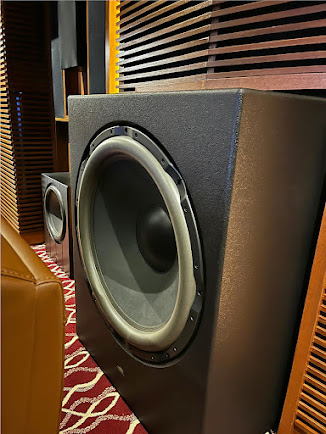Posted by Tan
The WAVE 2025 Show (10/10/25-12/10/25) has concluded. Here, in no particular order, are the five systems that impressed me most.
1. The Majestic Statement : MSB, Vitus, Marten
The Swedish Statement room was a clear crowd-pleaser. It must be one of the most popular room at the Show and had gone onto the favorite list of many of my HiFi buddies. The combination of MSB and Vitus electronics driving Marten Mingus Septet loudspeakers was quite spectacular. Playing in a large conference room, the system showed exquisite refinement and effortless resolution. At the same time it delivered a room-filling soundstage and immense scale. Whatever acoustic challenges there might be in such a big room, the musical enjoyment delivered by this system was never diminished, It was a performance that appealed to both the head and the heart.
2. Italian Soul, Swiss Precision: Nagra and Sonus Faber
Perfect HiFi showcased the new Sonus Faber Amati Supreme loudspeakers, with technology adopted from its flagship loudspeaker the Suprema in the mid and high sections. Paired with Nagra's impeccable electronics, the system showcased Sonus Faber's legendary musicality - especially a midrange that rendered vocals that were beguiling and palpable. Yet it could unleash dynamics and scale when the music called for, proving itself to be quite the all-rounder.
3. A Refined Partnership: Luxman and Audiovector
Audio Perfectionist acquired the distributorship of Luxman recently. This is the first time I heard the Luxman-Audiovector combination, and the synergy between them was a delightful surprise.. This system, consisting of Luxman electronics and Audovector R6 Arrete loudspeakers, wasn't the type that shout for attention, it did not highlighting certain aspects of the sound to grab the listeners’ attention, instead it invited deep listening. The sound was refined, nimble, and highly resolved, allowing the music to unfold naturally and reveal its details at its own pace.
Worthy of mention too was the Audivector flagship R10 Arrete loudspeakers paired with Soulution amplification in a bigger adjacent room. They sounded formidable, though I found myself personally drawn to the more intimate and utterly coherent performance of the Luxman and Audiovector R6 Arrete combination just a tad more.
4. Unbridled Power: ATC
Many exhibitors focused on delivering refinement and smoothness from their sysems, in contrast HiWay Laser's demonstration of ATC gear was a thrilling jolt of raw energy. The ATC SCA2 preamplifier and SCM100ASL active loudspeakers delivered music with unbridled impact and lightning-fast dynamics. This system wasn't just playing music; it was recreating the visceral excitement of a live performance. It was a powerful, exciting, and utterly compelling reminder of music's primal forces that would startle many listeners. Impressive and exciting.
5. A Rich Tapestry of Sound: Rega, Melody HiFi, and Canton
Choy Audio Visual weaved a uniquely attractive sonic tapestry. Was it the British Rega CD player, the tube-driven Melody amplifier, or the German Canton speakers? It was impossible for me to pinpoint. The result was a combination that produced slightly voluptuous imaging, and rich, saturated tonal colors. The overall presentation was simply attractive, offering a warm, musically enjoyable experience that was easy to love.
---------------------------------------------------------
Spotlight on Malaysian Innovation: It was inspiring to see homegrown talent making making its presence felt. I’d like to give two Malaysian designers special mention:
1. CCY Engineering
CCY Engineering designs and manufactures class A power amplifier. Their SS300B-25C amplifier, specifically designed for full-range loudspeakers, delivered a sound that was creamy smooth through the midrange and highs. Despite a small driver on the fullrange speakers, the system produced quite a prominent bass. The overall result was a relaxed, a little laid-back and musical presentation that will delight full-range enthusiasts and many audiophiles alike. https://www.ccyengineering.com/
2. JW Speaker Lab
I finally got to listen to a JW Speaker Lab’s HiFi loudspeakers in this Show as I only managed to catch their AV setups previously. This experience did not disappoint. Utilizing drivers from SB Acoustics' Satori line, including a rare Beryllium tweeter at this price point, their MTM loudspeakers were sounding clean and detailed, especially in the mids and highs. Coupled to 2 of their own subwoofers, the system also sounded strong in the bass. Overall, it was a well-balanced and musically coherent performance. For those who are looking to go beyond entry-level, JW Speaker Labs is definitely a brand worthy of your consideration. https://www.jwspeakerlab.com/
























